
Catherine Cookson
The lives of children and the perils and joys of growing up in the north-east of England play a large part in so many of this prolific and best-selling author's stories. However, there are really only eight books about this region that were specifically written with children as the designated audience. "Matty Doolin" (1965) , "Joe and the Gladiator"(1968) , "Go Tell it to Mrs. Golightly"(1977) and "Lanky Jones" (1980) are Catherine Cookson's contemporary stories, reflecting the lives of the children on what was for her the modern world. "Mrs. Flannagan's Trumpet", "The Nipper" (1970), "Rory's Fortune"(also entitled trBlue Baccy" (1972)), and "Our John Willie"(1974), are about the Tyneside of the past, mostly in the nineteenth century. Each story is unequivocally set in the world of working people.
"You can take the boy out of the town but you can't take the town our of the boy" is the idea that Catherine Cookson wants to explore in "Matty Doolin".
The lives of children and the perils and joys of growing up in the north-east of England play a large part in so many of this prolific and best-selling author's stories. However, there are really only eight books about this region that were specifically written with children as the designated audience. "Matty Doolin" (1965) , "Joe and the Gladiator"(1968) , "Go Tell it to Mrs. Golightly"(1977) and "Lanky Jones" (1980) are Catherine Cookson's contemporary stories, reflecting the lives of the children on what was for her the modern world. "Mrs. Flannagan's Trumpet", "The Nipper" (1970), "Rory's Fortune"(also entitled trBlue Baccy" (1972)), and "Our John Willie"(1974), are about the Tyneside of the past, mostly in the nineteenth century. Each story is unequivocally set in the world of working people.
"You can take the boy out of the town but you can't take the town our of the boy" is the idea that Catherine Cookson wants to explore in "Matty Doolin".
As the book starts Matty's life is in the middle of a long period of uncertainty. He is on the brink of leaving school and seems to be destined to work in the docks as his father already does. His ambition of becoming a vet is no more than a distant impossible dream for, even if he gained the right academic qualifications, there wouldn't be enough money to support him through the long years of training. Even the more modest idea of working on a farm is resolutely opposed by his father who is very set in his ways.
When his dog, Nelson, is killed in an accident the depths of Matty's misery succeed in alienating him from both his parents and from his closest friends. A camping expedition to a farm up on the fells beyond Allendale seems like a temporary respite from all the decisions that will have to be made once the holidays are over. With his two friends, Joe Darling and Willie Styles, he travels to Hexham by train and then the rest of the way on the back of Mr.Walsh's farm lorry.
The very different reactions of the three boys to life on the farm and to the routines of camping then become the centre of the story. From the very first they are charmed by kind Mrs. Walsh and made apprehensive by the dour behaviour of Mr. Walsh. Little does Matty know that he is being put to the test and watched. Both Matty and Mr. Walsh are reserved people and it is not until the very end of the book that they become aware of what they have to offer to each other. As usual in all of Catherine Cookson's books the central character is put through an ordeal which demonstrates his or her mettle. Matty's time of trial takes place out on the open fells in a period of extreme weather.
At the end of the book the author leaves you with the feeling that, though compromises will have to be made, Matty has taken the first positive steps on the way to finding his true destiny. As a part of the process of growing up he has also realised that the nature of his friendship with Joe and Willie has changed for ever.
In "Joe and the Gladiator" the author switches her attention to the character of Joe Darling who was only too glad to get back to Shields after his time on the farm. He has become an apprentice in the shipyard and, after six weeks there and at classes at the technical college, is still feeling his way. Once again we are presented with a boy of just fifteen who appears beset with troubles.
The trouble at work is the easily recognisable one of the malicious bully who attempts to make the junior apprentices' lives a total misery. Worse than that, however, is the possibility that Joe's mother and father may split up because of problems with his grandmother and her interfering ways. His friendship with Willie is unsatisfactory and his liking for him can't make him overlook the other boy's lack of courage and sticking power. A sudden and unexpected friendship with Mr. Prodhurst, the old rag and bone man, proves to be the turning point that is going to guide Joe through to a new maturity.
Unlike Matty's physical struggle on the mountainside, Joe's ordeal is more of an emotional and moral one. Mr. Prodhurst dies and there is no one who can look after his old horse, the Gladiator, apart from Joe himself. The impossible nature of what he is trying to do hy feeding and stabling a horse on the pitifully small wages available to him is pointed out again and again. The Gladiator himself is uncompromisingly ugly with none of the features that are likely to attract admiration or compassion.
Though the horse itself forms a natural bond with Joe, everyone else feels that it would be better put out of its misery. Only Anna Billings, the vet's daughter, shares Joe's determination to look after the horse and treat him well. Gradually Joe begins to understand that the girl that he first had thought was just "ordinary" is transformed into something attractive by the kindness in her nature. It doesn't seem to occur to him that his own sensitive understanding of the shipyard bully's inability to read and write had changed his relationship with his former tormentor into something positive.
By the end of the book Joe has put the finishing touches to his rescue of the Gladiator, reconciled the warring members of his own family, received a legacy that has a fairy-tale quality to it and been welcomed as an acceptable companion for Anna whose background is clearly a class above his own. The future has never seemed brighter and the moral message about loving and caring for animals and people and honesty and openness in your dealings has been safely delivered.
In "Go Tell it to Mrs Golightly" the central character is female, nine years old and blind. In spite of the youth and the handicap the dominating factor in this story is the grip that events in the past have upon the actions of people in the present. Towards the end of the book a kidnap adventure is brought into the strange world of Bella and her grandfather and, though unconvincing in itself, the crisis it creates permits a satisfactory sweeping away of the treasured grudges that have prevented normal and natural affections from being unleashed.
Because of her blindness Bella lives a lot of her life inside her own imagination. For the adults who have to come to know her it is difficult for them to evaluate just what is real and what is a manufactured fiction. The readers themselves remain unsure of the reality or otherwise of Mrs. Golightly, that fund of wise and pithy sayings about life and how you should deal with it, until very nearly the end of the book. Strangely enough the lack of any detailed link with any truly identifiable places on Tyneside or, in other words the absence of sustained description about Newcastle or the countryside, actually adds to the conviction with which the author talks about Bella's dark world.
Similarly, apart from references to "lorries" and "social workers", the story also seems to elude pinning down to any particular decade in the twentieth century. Naturally, Bella's blindness heightens the tension in the story because of her vulnerability. Just as predictably imprisonment in an underground cellar allows her to use her specially developed other senses to aid the escape of herself and her companions.
"Lanky Jones", the final story in the "modern" period, follows the fortunes of two families who are again caught up in the midst of troubles that threaten to engulf their lives in protracted misery. A fifteen year old boy is also used once again as the main protagonist. Towards the end of the story the customary life-threatening situation, which verges on the melodramatic, is used as the means whereby the trapped emotions are released, subjected to a new examination and then re-packaged into a more promising shape for the future. Daniel's parents have divorced and Daniel (nick-named Lanky) has chosen to live with his father.
He certainly does not get on with his mother or the new husband she has chosen. When he and his father become snowbound on a farm near Bardon Mill the strange behaviour of each member of the Everton family diverts them for a while from their own troubles. Catherine Cookson shows us that things hidden away develop their own extra potential for trouble. Thus the son of the Everton family does not know that he is an adopted child. The daughter is subject to epileptic fits and her condition is kept secret from the world. Around the farm of the recently bereaved Mrs. Everton lurks the unpleasant Billy Combo, a one-time friend of the dead farmer and a man who has designs on his widow. When Daniel blunders across the hide-out of the sheep stealing gang which has been operating in the district his life is immediately thrown into danger.
The story races down to Tyne Dock and to the climax on board a Scandinavian ship. The key to the preservation of his life and to the resolution to the problems in his own family and that of the Evertons proves to be once again kindness, understanding and the declaration of love.
In the stories from the 19th century the details of the actual settings are much more thoroughly evoked. It is as though the writer expected her modern readers to take the modern surroundings for granted and concentrated on the characters and the action. However, a whole new world or rather "old world" had to be brought to life, if children were going to enter thoroughly into the experiences of people in the past.
Each of the four stories has a boy on the threshold of adult life as the central character. In two of the stories the most important adult in the life of the boy hero is a good person who is trapped by a deed done in the past that lays them open to blackmail. In both cases these "good" people were not the perpetrators of the evil work but witnesses to what happened who did not come forward to declare what they knew. Thus Mr. Cornwallis in "Rory's Fortune" saw a revenge killing take place and partly abetted it whilst in a state of drunkenness, whilst Miss Peamarsh in "Our John Willie" saw her father kill her brother with a blow that led to a fatal collision with a metal fire-dog.
However, in spite of the similarity of these ideas, Catherine Cookson explores the fate of their characters in very different ways.
Mr. Cornwallis settles for a life of honest hard work in the midst of the community, showing kindness to Rory and Rory's impoverished family. Enmeshed in a gang of smugglers by a form of blackmail, he tries to use his increased wealth in order to perform good deeds. Miss Peamarsh, in contast, withdraws from the world whilst her fortunes dwindle as she is bled by a blackmailer who was a former servant. She is led back to a happy life-style by her compassion and then "maternal" love for Davy Halliday and his deaf and dumb brother. Mr. Comwallis dies and Miss Peamarsh lives and thrives.
There is also a clear difference in maturity between the differing heroes of the four books. Aspects of sexuality and the natural progression to marriage are explored in "Rory's Fortune" where, at the end of his adventures, still determined to work hard to support his ailing mother and father and his little brothers and sisters, Rory realises that his desire to fulfil his relationship with Lily will lead inevitably to more mouths to feed.
In "Mrs. Flannagan's Trumpet" the young hero seems destined to make his life with Daisy but she, as yet, is only fourteen years old. Nevertheless, the issue of what happens to young girls in the world dominated largely by men and their sexual appetites is actually the main driving force behind the plot.
When his mother falls ill and has to go to Hexham to recover, he knows that he cannot leave his pretty sister, Penny, to fend for herself in that part of South Shields whilst he is at work. Worse than that is the realisation that the smuggling that is taking place from the rocks near Marsden is that of young girls destined to supply the brothels of continental Europe.
The behaviour of the suave and sophisticated Mr. Van and his payment of money for smooth stones on the beach was merely a cover for his weighing up of the merchandise in his role of white slaver. Even "The Nipper" which largely concerns the activities of miners and their struggle with the managers and mine-owners, contains an episode where young Sandy's mother is subject to the violent and unwelcome attentions of the revolting Mr. Mullen and his unbridled desires.
As can be seen it was altogether a rougher, more unpleasant and violent world that Catherine Cookson wanted to create for her young readers in these four stories, hi particular she wanted to show the effects of grinding poverty, degradation and real hunger. For the working classes the words "law and order" did not represent an ideal of justice that would work fairly and impartially. The police and the militia were the agents of the bosses; their role in the world was perceived to be the maintenance in power of a certain select few.
Little wonder that activities which evaded or broke the law such as poaching game or smuggling were tolerated or encouraged amongst the ordinary people. In the midst of such misery Catherine Cookson manages to show many individuals struggling to live honestly and decently, caring for their families and friends and sometimes, when possible, offering kindness even to strangers. There were also others who were determined to succeed or better themselves by the sweat of their brow or by gaining themselves a hard-won education.
One such is Tom Fitzsimmons in "The Nipper" who wants to negotiate with the mine-owners rather than blow them up. Another is Peter Talbot in "Our John Willie" who takes on the job of Miss Peamarsh's gardener and gains a new faith in human nature after finally being offered his chance.
Perhaps the most important thing that unites the modern and historical children's books by this author is the idea of the family. Death, divorce, adoption, desertion, long-held grudges, the activities of "black sheep", and class differences all can conspire to break up the family unit. A close study of the ending of all of the stories suggests that happiness comes not just with a sense of achievement in your work but also with assimilation into a family unit by the promise of marriage to a sweetheart, by the forgiveness and reconciliation of the warring generations, by the acceptance of new partners for estranged parents and, above all by the healing power of kindness and love.







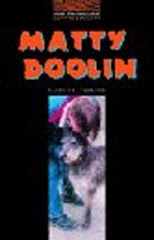
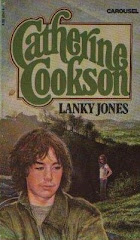

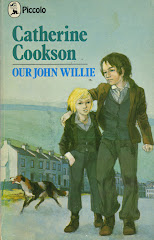


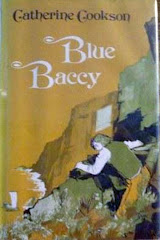
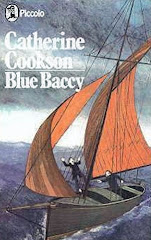
No comments:
Post a Comment